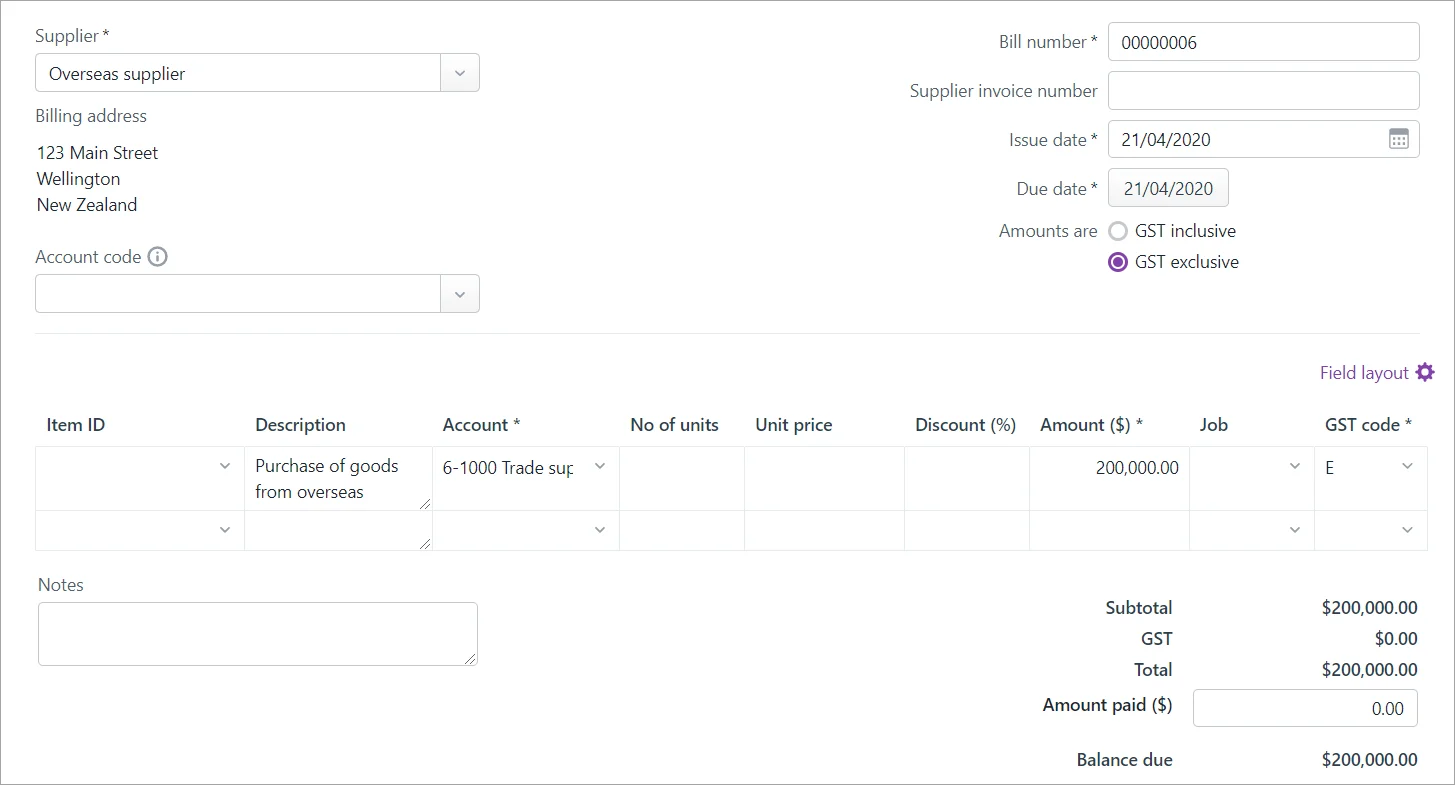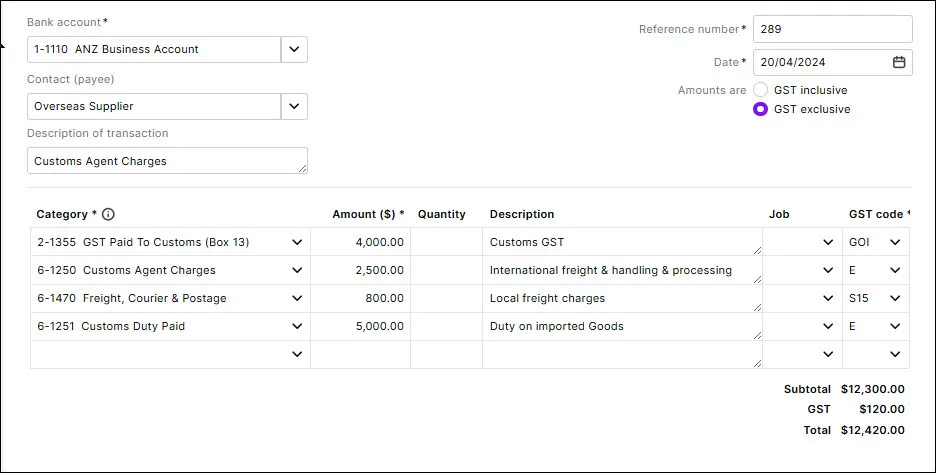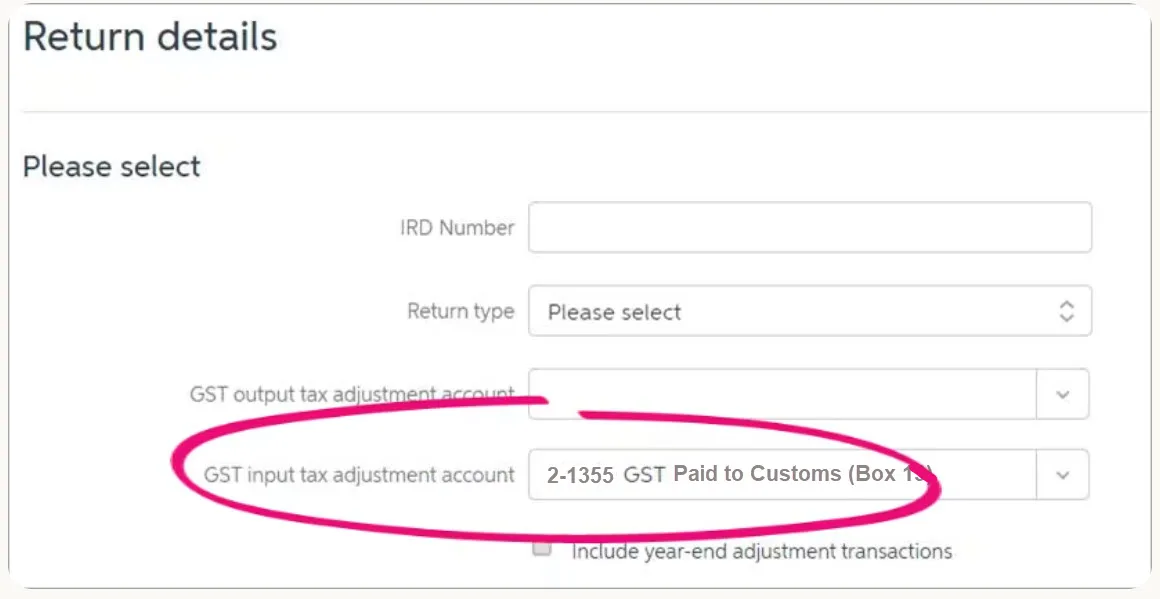When importing goods from overseas, GST is levied at 15% of the landed cost of the goods and is payable to the customs agent, not your overseas supplier. The GST paid to customs needs to appear in Box 13 of the GST return, so you need to create one bill to record the overseas purchase and another bill to record the costs associated with the import.
The customs agent usually handles the costs associated with the import. Generally, the customs agent will arrange payment for, and collection of, the goods on arrival in New Zealand, and may pay your customs duty, freight, insurance and GST liability. You will need to reimburse the customs agent for these costs.
Here's our recommended method for recording overseas purchases. If this approach doesn't suit your business needs, check with an accounting advisor about your best course of action.
1. Setting up
To track your overseas purchases and ensure the GST is reported correctly, you'll need to set up the following:
Create two liability categories (Accounting menu > Categories (Chart of accounts) > Liabilities tab > Create category). Need a refresher on creating categories?
GST Input Tax Adjustments - this category might already exist in your file
GST Paid to Customs - this category will hold the value of GST paid to customs and needs the GOI GST code
Here are our example categories as they appear in the category list:

Create two expense categories; one for Import Duty that attracts no GST, and one for other Customs Agent Charges that do have GST. This ensures that Import Duty is not being recorded in your GST.
Here are our example categories as they appear in the category list:
2. Recording the overseas purchase
We'll record the overseas purchase by treating the import costs as expense items.
Create a bill for the purchased goods (Create menu > Bill). Need a refresher on creating bills?
Exclude the GST by selecting the GST exclusive option.
Code the purchase using the E GST code.
If the supplier has charged you freight costs, include this on this bill.
Here's our example:

Create a separate bill for the import costs paid to the customs agent. This transaction will increase expenses and record the GST to be included in the GST adjustment.
For the customs agent charges, allocate it to the Customs Agent Charges expense category created earlier, and use the E or S15 GST code (based on the agent's invoice details).
For the customs GST on the agent's invoice, allocate it to the GST Paid to Customs liability category and use the GOI GST code.
For the import duty charged by the customs agent, allocate it to the Import Duty expense category and use the E GST code.
If any local freight has been charged, allocate this to the applicable freight category and use the S15 GST code.

Using the payments basis?
If you're not creating bills but you're accounting for the GST on imports at the time of payment (e.g. via a bank feed), you can simply allocate the GST at the time of payment directly to the GST Input Tax Adjustment account. The initial entry to GST Paid to Customs (as shown in step 2 above) and the subsequent journal entry described below in Task 3 'Transferring the GST' does not need to occur.
Pay these bills as usual (Purchases menu > Bills > click the ellipsis (...) > Record supplier payment). Need a refresher for paying bills?
3. Filing your GST return
Before filing your GST return, run the GST report to ensure that all the GST you need to report is recorded correctly.
Go to the Reporting menu > Reports > GST Report to determine the total amount applied to the GOI GST code for a given period.
Choose your Accounting method (Payments or Invoice)
Filter the report for the GOI GST code for the relevant period.
Note that if you run the GST return report, it won't include box 9 (GST debit adjustments) and box 13 (GST credit adjustments), but the return you file to IR will include those values.
When preparing your GST return
On the Return details screen, choose the GST Input Tax Adjustments category you set up in step 1 as the GST input tax adjustment category.

This ensures the correct value appears at box 13 on the return. Need a refresher for preparing your GST return?